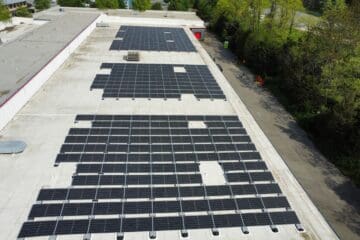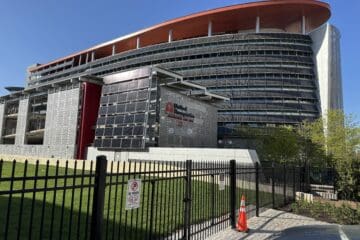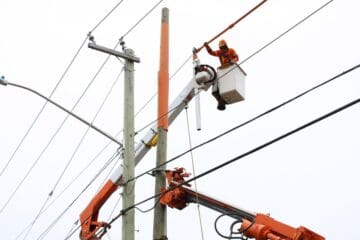How to Build Solar Projects on Complex Commercial Site Conditions
Solar energy projects offer significant benefits, but they also come with unique challenges that require expert planning, innovative solutions, and technical expertise. From complex site conditions to stringent regulatory requirements, navigating these obstacles is essential to delivering successful solar installations. Below, we explore some of the key aspects that make certain solar projects particularly challenging and how they can be addressed.
What to Do with Limited Roof Space with Obstacles?
Commercial buildings in Washington D.C. and Maryland have limited usable roof space due to HVAC units, vents, or skylights, making solar panel placement difficult. To maximize energy generation, we must employ creative layout designs, utilize higher-efficiency panels, and consider alternative mounting solutions such as canopy structures or vertical installations.
Does Shaded Areas Impacting Panel Efficiency?
Trees, nearby buildings, or other obstructions can cast shadows on solar panels, reducing energy production. Advanced solar modeling tools and shading analysis help determine optimal panel placement. Technologies like microinverters or power optimizers can also mitigate the impact of partial shading by optimizing energy output at the panel level.
What to Do with Uneven or Sloped Terrain for Ground-Mounted Systems?
Ground-mounted solar arrays on uneven or sloped land require specialized racking solutions to ensure stability and optimal tilt angles. Civil engineering expertise, grading techniques, and adjustable racking systems help accommodate challenging landscapes while maintaining structural integrity and efficiency.
Is it Easy Integrating Solar Power to Electrical Grids?
Connecting a solar system to an existing electrical grid can be complex, especially in PEPCO regions with strict grid requirements. Aurora Energy engineers design systems that align with PEPCO and BGE utility regulations, incorporate protective relays to prevent back feeding issues.
Net metering policies impact the financial viability of solar projects by determining how excess energy is credited or compensated. Staying informed about policy changes, advocating for fair solar incentives, and designing systems with self-consumption strategies help mitigate financial risks.
Designing Commercial Solar for Permitting Requirements in Limited Space and Extreme Weather Conditions
High winds, heavy snowfall, and extreme temperatures pose risks to solar installations. Systems must be engineered to withstand local climate conditions, utilizing wind-resistant mounting solutions, reinforced structures, and anti-icing technologies to ensure durability and consistent performance.
When space is a constraint, maximizing energy production requires high-efficiency solar panels, bifacial modules, and innovative layout configurations. Additionally, incorporating energy-dense battery storage can help optimize energy usage and improve overall system performance.
How to Navigate Complex Permitting Processes?
Different jurisdictions have varying solar permitting requirements, which can significantly impact project timelines. Early engagement with local permitting authorities, detailed documentation, and digital permitting tools help streamline approvals and avoid unnecessary delays.
Investing in commercial solar energy is no longer just an environmental decision—it’s a strategic move that enhances property value, attracts quality tenants, and increases long-term profitability. If you’re looking to make your commercial property more competitive and future-proof, consider installing solar. Contact Aurora Energy team today for a customized solar energy assessment and learn how your property can benefit from sustainable energy solutions.



